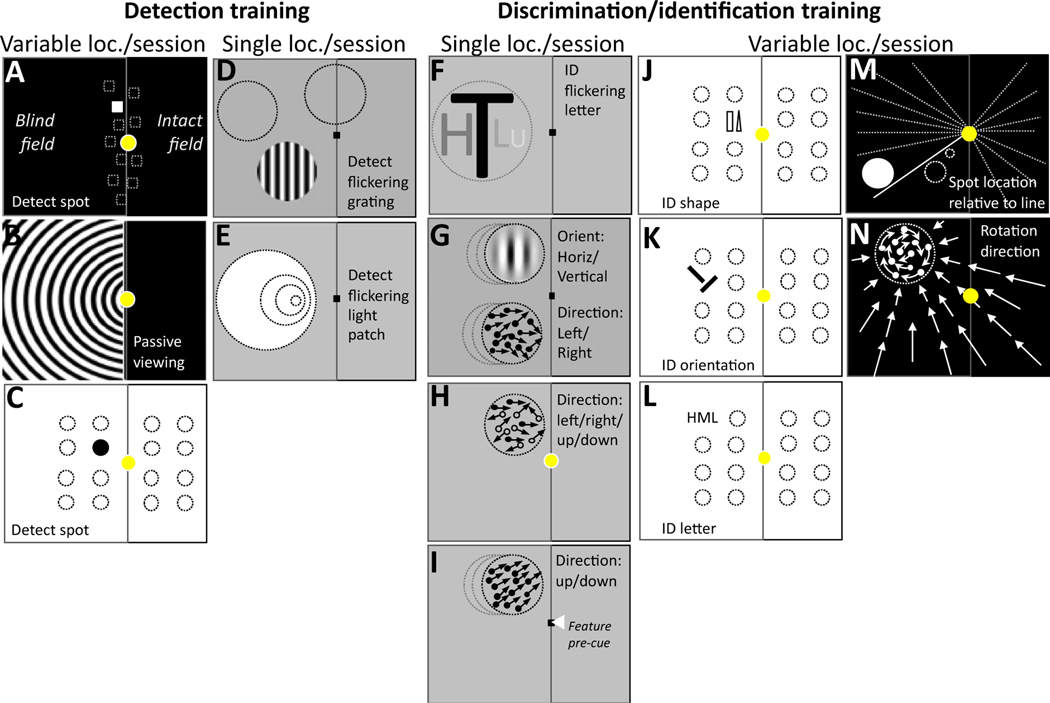Fig.25.2.
Simplified, schematic representation of visual training tasks administered to restore vision in cortically-blinded portions of the visual field after occipital stroke. Each rectangular aperture represents the computer display in front of the putative patient, with a fixation spot (yellow in paradigms that did not use an eye tracker, and a small black square in paradigms that used an eye tracker for fixation enforcement at least during pre-and posttests). For illustrative purposes, the putative blind field is considered to be on the left side of the vertical centerline in each aperture. Tasks the patients were asked toperform are notedin each aperture and are separated according to whether they involved stimulus detection or discrimination/identification (ID), as well as according to whether they stimulated single or variable/multiple locations in a given training session. (A) Original VRT task, Kasten et al. (1998). (B) Extrastriate VRT task, Jobke et al. (2009). (C). Spot detection task, Chokron et al. (2008). (D) Detection of 10 Hz-flickering, contrast-varying sinusoidal grating, Sahraie et al. (2006, 2010), Trevethan et al. (2012). (E) Detection of flickering light patch of different sizes, Raninen et al. (2007). (F) Identify flickering letters (4 possibilities) of different sizes, Raninen et al. (2007). (G) Discriminate the orientation (horizontal/vertical) of high-contrast, static, nonflickering Gabors, or the global motion direction (left/right) and integration of random-dot stimuli, Huxlin et al. (2009), Das et al. (2014). (H) Discriminate the direction of motion (4 possibilities: up/down/right/left) of noisy, random-dot stimuli, Vaina et al. (2014). (I) Fine direction discrimination with feature-based attentional pre-cues, Cavanaugh et al. (2019). (J) Shape identification task (rectangle/triangle), Chokron et al. (2008). (K) Orientation identification task (2 choices: left/right of vertical), Chokron et al. (2008). (L) Letter identification task (3 choices: H, M or L), Chokron et al. (2008). (M) Spot location is relative to the line (2 choices: clockwise/ anticlockwise), Elshout et al. (2016). (N) Rotation direction of circular target at the center of flow-field (2 choices: clockwise/anti-clockwise), Elshout et al. (2016).

